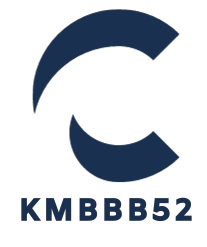In the highly competitive hospitality industry, email marketing remains a cornerstone strategy for engaging customers, building loyalty, and boosting bookings. Crafting an email that captures attention and converts readers into guests requires a deep understanding of both your audience and the unique offerings of your brand. Below, I’ll share essential tips and effective examples to help you design email marketing campaigns that resonate and drive results.
1. Personalize Your Messages
Personalization goes beyond inserting a customer’s name in the email. It involves tailoring content to meet the interests, preferences, and past behaviors of your recipients Hospitality Email Marketing Creatives. For example, if a customer previously stayed at your resort and enjoyed spa services, your email could highlight a special offer on a spa package upon their return.
Example: “Hi [Name], we noticed you enjoyed your last spa day with us! We’d love to welcome you back with a special 20% off your next spa retreat. Come unwind with us again!”
2. Use Eye-Catching Visuals
In hospitality, your goal is to sell an experience. High-quality images of your amenities, rooms, or picturesque views can make a substantial impact. Ensure your visuals are on brand and have a consistent look and feel that enhances your message.
Example: Include a breathtaking sunset view from one of the hotel balconies, captioned with “Imagine yourself here. Book your escape now with exclusive rates.”
3. Create Engaging Subject Lines
Your subject line is your first and often only chance to grab attention. Make it compelling and clear, with a hint of urgency or exclusivity to prompt opens. Avoid clichés and always aim for something that promises value to the reader.
Example: “Unlock a Secret Deal! Exclusive Rates Just for You—This Weekend Only!”
4. Optimize for Mobile Devices
With most emails now being opened on mobile devices, your email must read well on small screens. Keep your layout simple, use large fonts, and ensure links and call-to-action (CTA) buttons are easy to tap.
Example: Design your email layout to stack images and text vertically for easy scrolling on mobile, with CTA buttons large enough to click without zooming.
5. Incorporate Social Proof
Testimonials, reviews, and user-generated content can significantly enhance trust and credibility. Feature real quotes from guests about their experiences or highlight ratings from popular travel review sites.
Example: “Don’t just take our word for it—see what our guests have to say!” followed by a few guest testimonials and star ratings from TripAdvisor.
6. Offer Exclusive Deals
Everyone loves feeling like they’re getting a special deal. Offer your email subscribers exclusive promotions they won’t find elsewhere. This not only drives bookings but also boosts your email sign-ups.
Example: “Special Offer for Subscribers Only: Save 30% on your next stay when you book through this email!”
7. Leverage the Power of Storytelling
Tell a story that can transport potential guests to your location. Whether it’s the tale of the couple who got engaged at your hotel or the family who had their best vacation ever, stories can evoke emotions and persuade people to create their own experiences.
Example: “Meet John and Sarah, who celebrated their anniversary with us last month, and discover their unforgettable weekend getaway.”
8. Test and Optimize
Regularly test different aspects of your email campaigns—subject lines, images, CTAs, and send times. Use A/B testing to see what resonates best with your audience and refine your approach based on data.
Example: A/B test two different images or two different subject lines to see which one achieves a higher open rate and click-through rate.
Conclusion
In the hospitality industry, where every interaction counts, email marketing is a powerful tool to engage and excite potential customers. By personalizing your approach, optimizing for mobile usage, leveraging visual storytelling, and continuously testing your strategies, you can create effective email campaigns that not only stand out in crowded inboxes but also convert readers into loyal guests. Remember, the key to success is understanding your audience deeply and offering them real value through your communications.
4
